|
I have to admit, I was a little nervous to teach this class. Would a bunch of preschoolers allow me to limit them to one color? Would they find monochromatic art to be completely boring?? I knew an added challenge would be that many kids are still learning the names of colors. What happens when I throw two shades of yellow at them and name them both yellow? Will I completely confuse these children? In the end, this was one of my favorite classes and their artwork turned out STUNNING. I was so sad when they took their art home. I wanted to hang their work in the studio and never let it go.
0 Comments
Space...the final frontier. No, no, not that kind of space. When we talk about "space" as part of the elements of design, we are talking about the use of visual area in an art piece. The idea of "space" can be pretty complex in meaning and by no means an easy thing to teach young children. So without trying to verbally teach anything, my goal in this class was to take this abstract idea and make it tangible.
Shape is a familiar concept to young children. Us parents and teachers are often quizzing the kids in our lives, "What shape is this?" The familiarity of the subject made it easy for students to quickly engage and remained focused in our Elements of Design class. We began class playing with shapes that we could explore with our hands - MagnaBlocks, wood blocks, Duplos, pattern blocks, and GeoBoards. Young students learn best when moving, touching, and doing. One little girl jumped up from her work and announced, "Hey! Two triangles make a diamond!" She would not have learned that from me telling her. She needed to discover it.
What is a line? It's simply a moving dot. Movement is also the best way children engage with the world. Our class focusing on Line began with several immersive activities where students became the moving dots.
We began with a Montessori-style activity, "Walking the Line," inviting children to use their whole body, refining balance and control. Some children used their creativity and adapted the line to become a road to drive a car. |
Archives
January 2024
Categories |
Proudly powered by Weebly

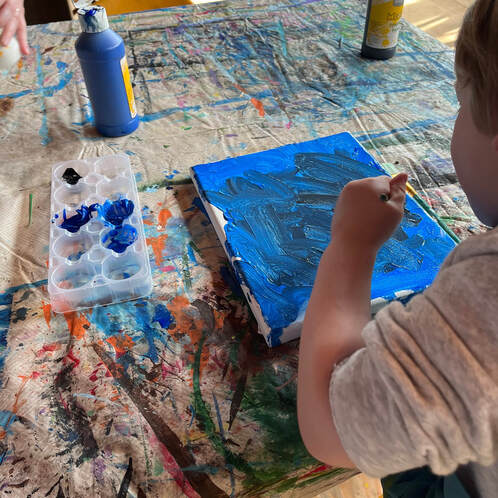
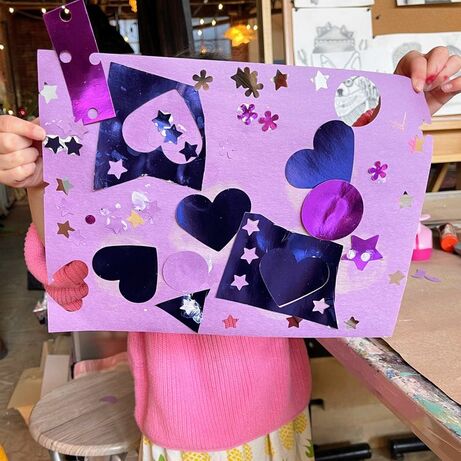
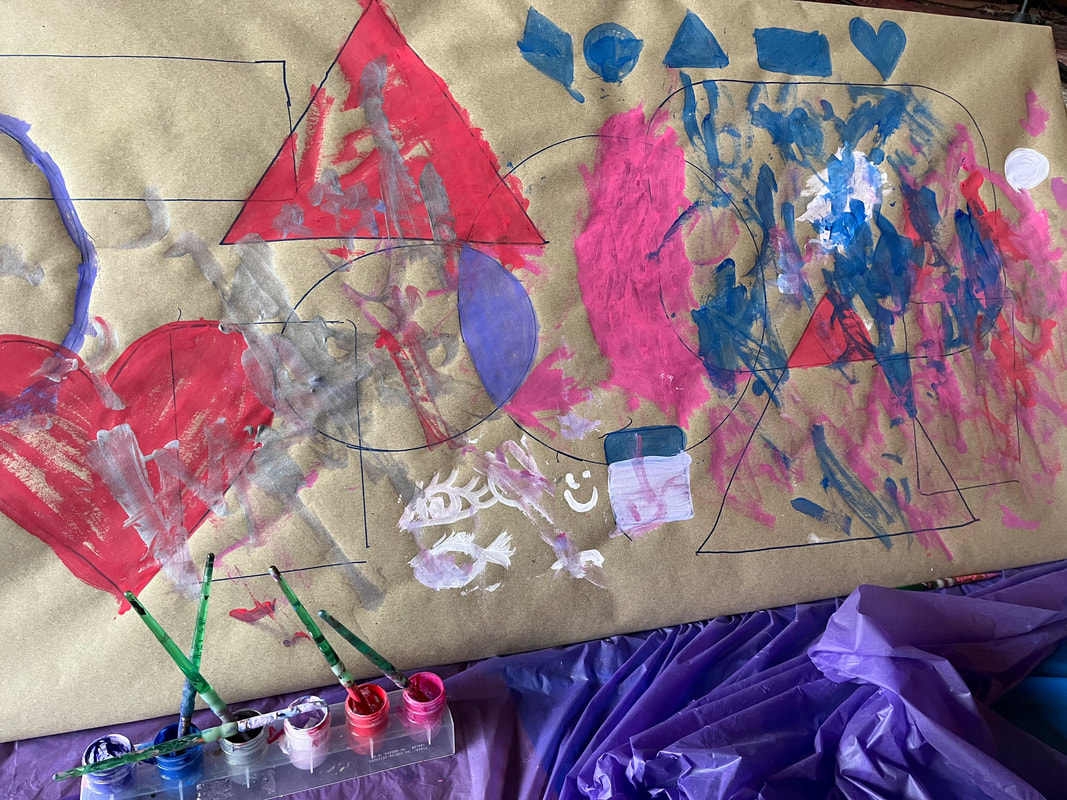
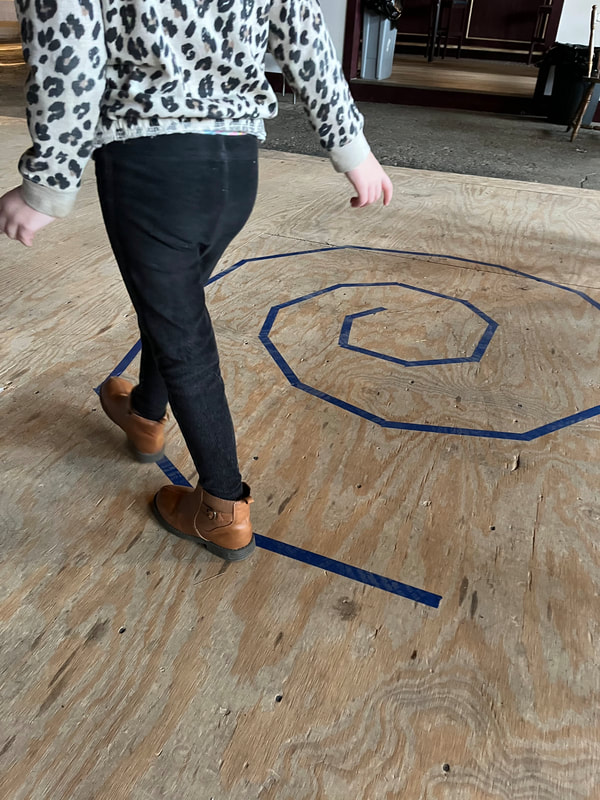
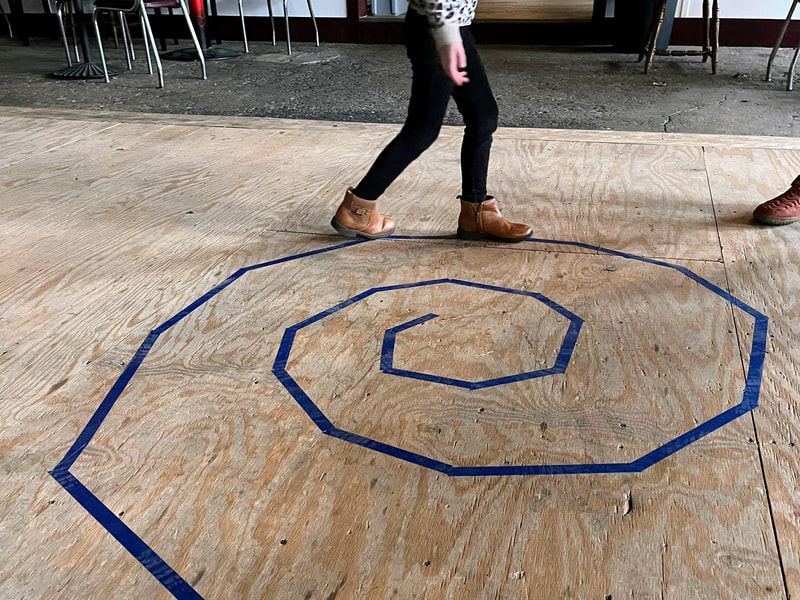
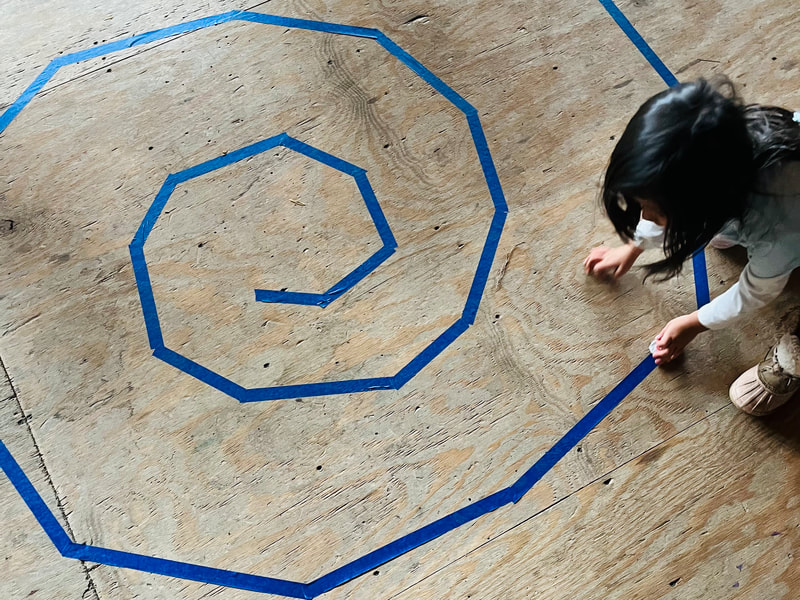
 RSS Feed
RSS Feed